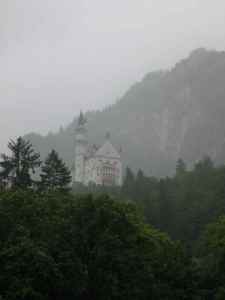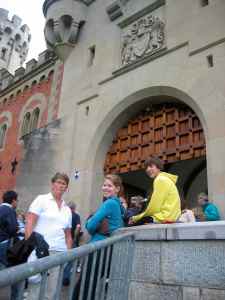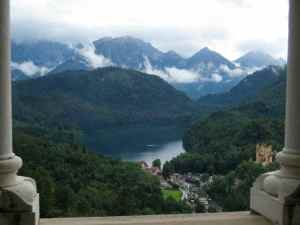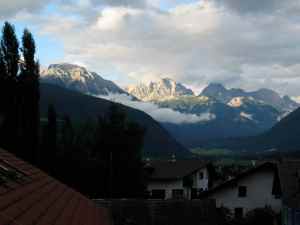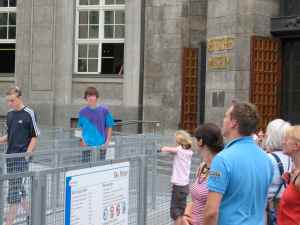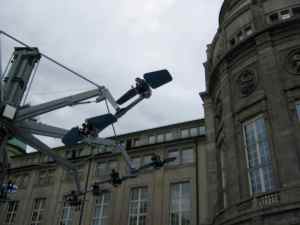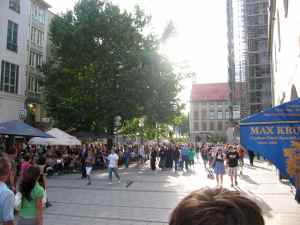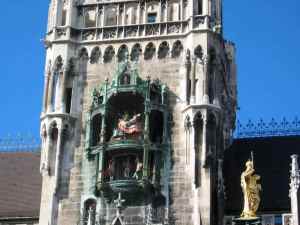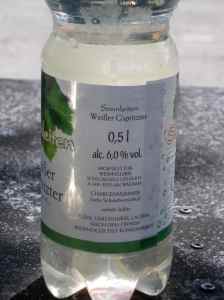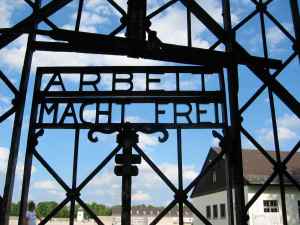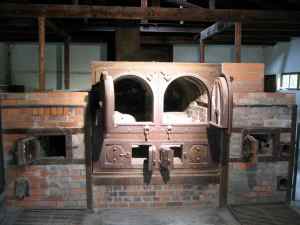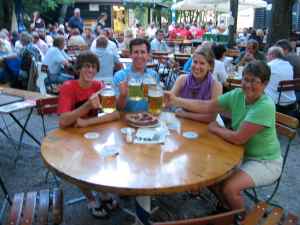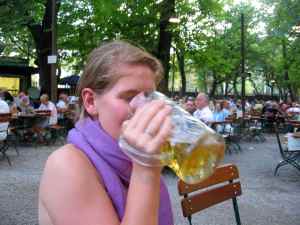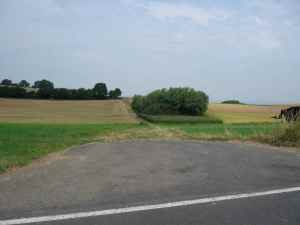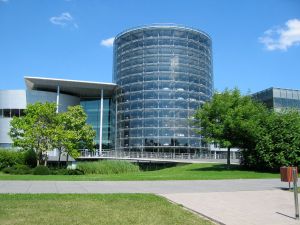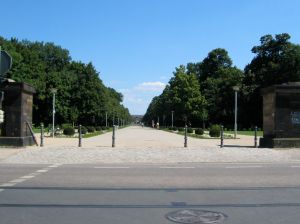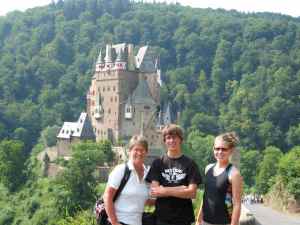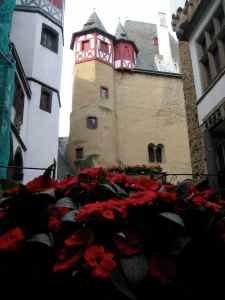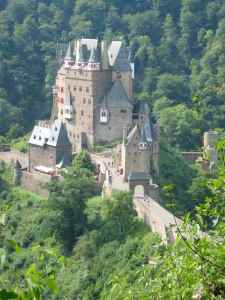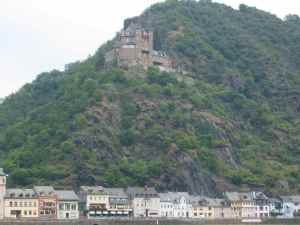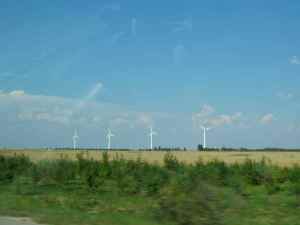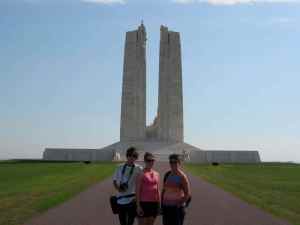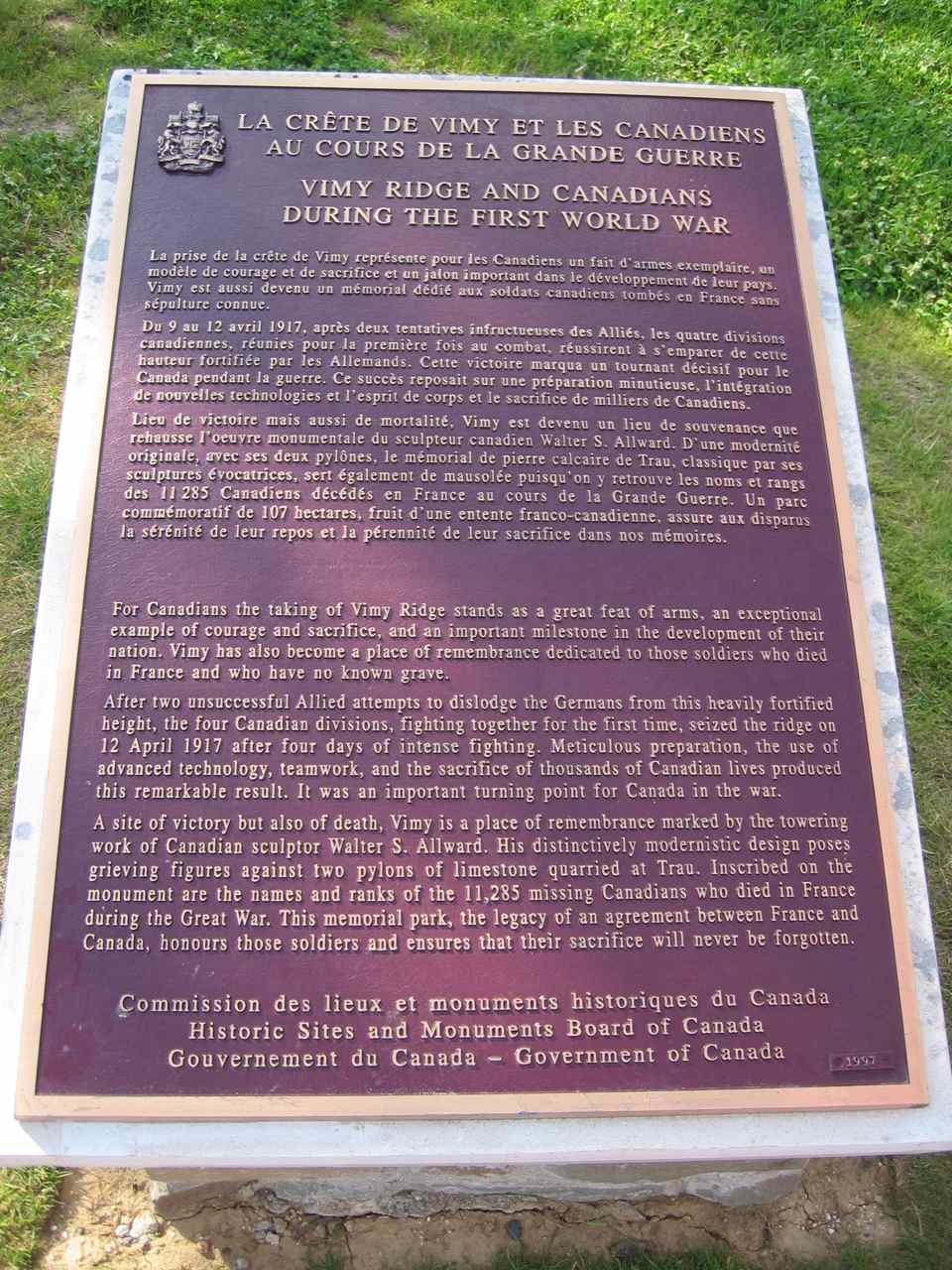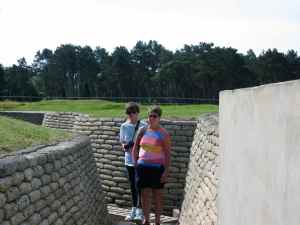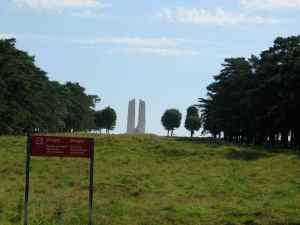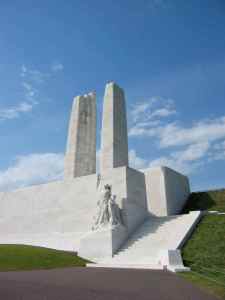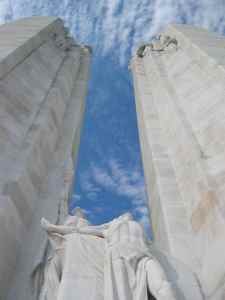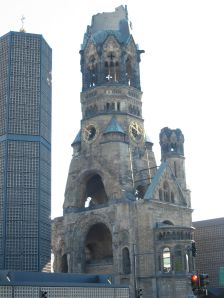
Bombed out church left the way it was in 1945, to remember . . .
This famous church remains a symbol of what Berlin looked like after the Allied bombing campaigns that brought an end to the 2nd World War in 1945. Although it is difficult to keep development from sharing the skyline.
When Jeff visited Berlin in the summer of 1982 he did it as a day trip from Hamburg. The train left Hamburg early in the morning. When it reached the East German border, it stopped, armed Border guards got on the train and proceeded to work their way through the train issuing VISA’s for a cost of 25 DM. The guards did not allow any pictures to be taken from the train. When the train reached West Berlin (an island of Western democracy surrounded by Eastern Block East Germany), the guards got off the train while other guards and German shepard dogs checked under the train to ensure that no one was sneaking into West Berlin.
Once in West Berlin, non-Germans had to make their way to Checkpoint Charlie as it was the only route into East Berlin. The East Germans required you to change 25 West German Marks into 25 East German Marks as they checked your bags for contraban. Jeff had to give up his copy of Time magazine as it represented “Western propoganda”!

Checkpoint Charlie as it looked in 1989, just after the wall came down.
We didn’t take any pictures of Checkpoint Charlie as it stands today as it has become overly commercialized with “out of work actors” posing in American uniforms for pictures, for 1 Euro.
This is very similar to what it looked like in 1982, but today, there is no sign of these buildings, just a couple of empty lots.

Our "Berlin Walks" tour guide, Gigi, in the Union Jack top and floppy black hat.
There seemed to be so much to see in Berlin and a great deal of history to pick up as well. So we signed up for a walking tour of the capital. Gigi, our guide was and unlikely choice as she was born and raised in Australia, moved to Berlin a couple of years ago after falling in love with the place after an earlier visit and is now doing her Masters in English Literature.
But she did an excellent job and knew her history backwards and forwards as well as the current political and social climate.
We walked for nearly 5 hours with temperatures peaking at 31 C, but it was an excellent way to see Berlin.
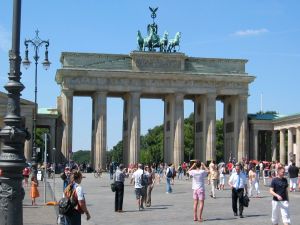
The Brandenburg Gate used to be adjacent to the Wall and this side of the wall was "no man's land".
From 1961 to 1989 no one stood where these people are, unless you were an East German border guard patrolling “no man’s land”. This was the area on the East German/Berlin side of the wall that prohibited people from getting close to the wall.
Today it is wide open and sits across the street from Tiergarten Park and lines up with Victory Column in the centre of the park.
Our room at Pension Peters was located near the Zoogarten S-Bahn station, by the Berlin Zoo at the West end of the park.
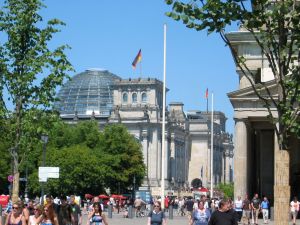
The Reichstag as seen from the Brandenburg Gate on the right.
The glass domed building on the left of the picture is the German parliament or Reichstag. The parliament chambers are below the dome which has been fitted with mirrors to channel light into the parliament and reduce the need for artificial light. The dome also contains a walkway that allows the public to walk above the floor of the parliament. This is designed to ensure the transparency of government as the people can always be watching.
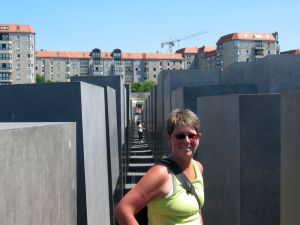
Deana standing in the Memorial to the murdered Jews of Europe.
This interesting memorial to the Holocost victims contains over 2000 blocks (resembling coffins) of varying heights. Each block is coated with a special substance that prevents graffiti from sticking to the blocks. Ironically, the company that developed this anti-graffiti compound was the same company that supplied the gas for the gas chambers during the holocost.
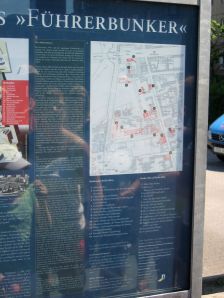
The site of Hitler's bunker during the war.
There have been a lot of stories about Hitler’s final days in 1945, but apparently a lot more information has come to light since the Soviet Union broke apart in 1989. It turns out that they recovered his remains and then kept it secret.
The bunker is suggested to have been sufficient to withstand a conventional nuclear blast as the roof was made of 3 meters thick concrete. This has posed a problem for putting up apartment buildings on Berlin’s otherwise swampy ground, so this area remains a parking lot.
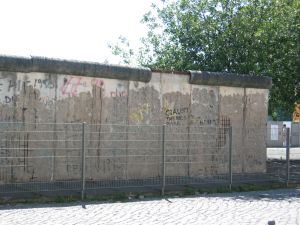
One of the few remaining sections of the Berlin Wall, which was approx. 150 km long.
Very little remains of the Berlin Wall. This is one of the few remaining sections.
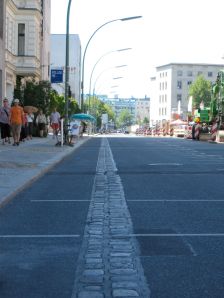
Two rows of bricks in the pavement mark the location of the Berlin Wall.
The Wall has been replaced by two rows of bricks to show its former location. At this point, just west of Checkpoint Charlie, the left side was West Berlin and the right side was the “no man’s land” of East Berlin.
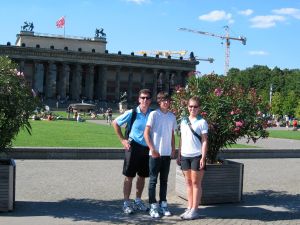
Jeff, Andrew and Jessica near the old marching square and Museum.
At the end of a 5 hour walking tour, we are standing before a square that Hitler had paved so that it could be used for marching. It has now been restored to a park with plenty of grass.
We really enjoyed Berlin. It is a really vibrant city with lots of young people and an active night life. Andrew enjoyed being able to have a beer with dinner. He especially grew to enjoy a “Radler” drink which I believe means “cyclists” because it is a mix of beer and pop, usually an orange pop or Sprite. It is very refreshing without filling you up like a half litre of beer normally would.
